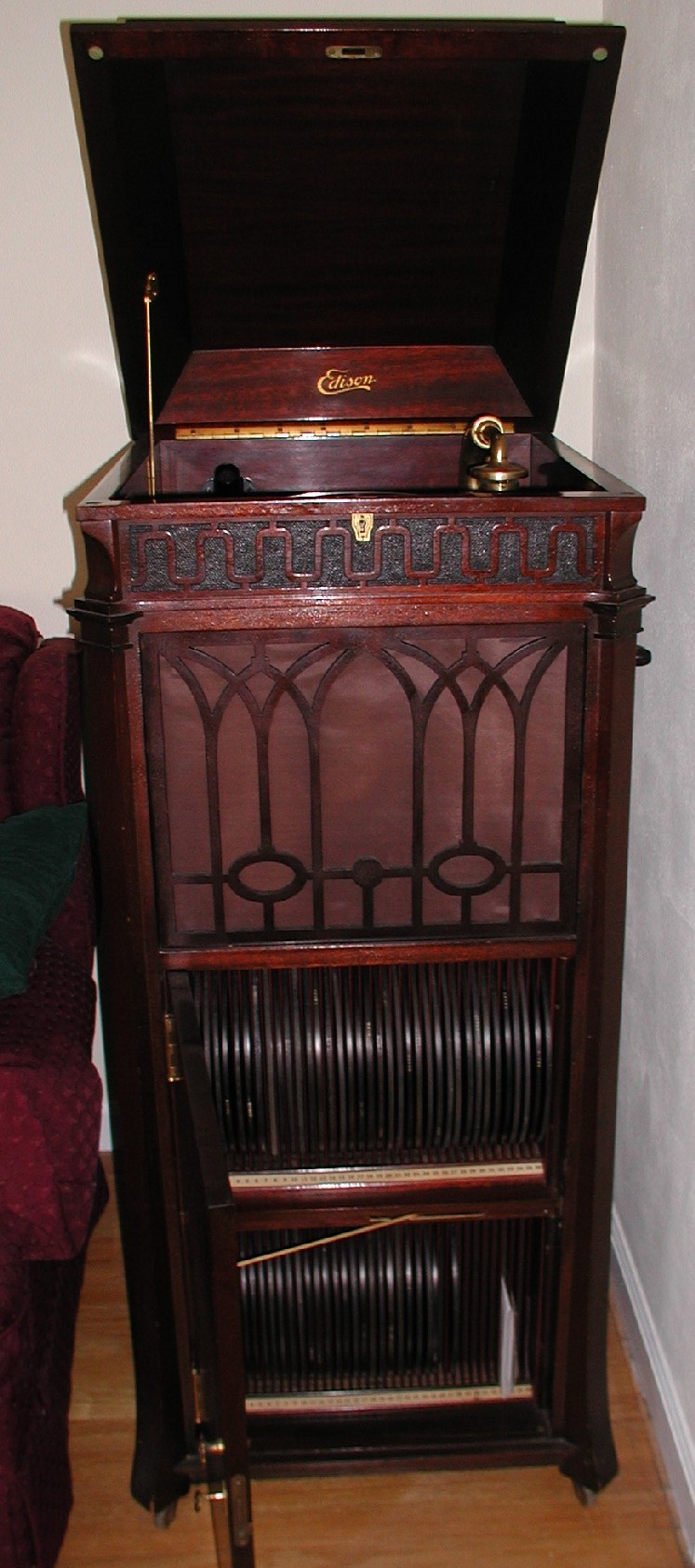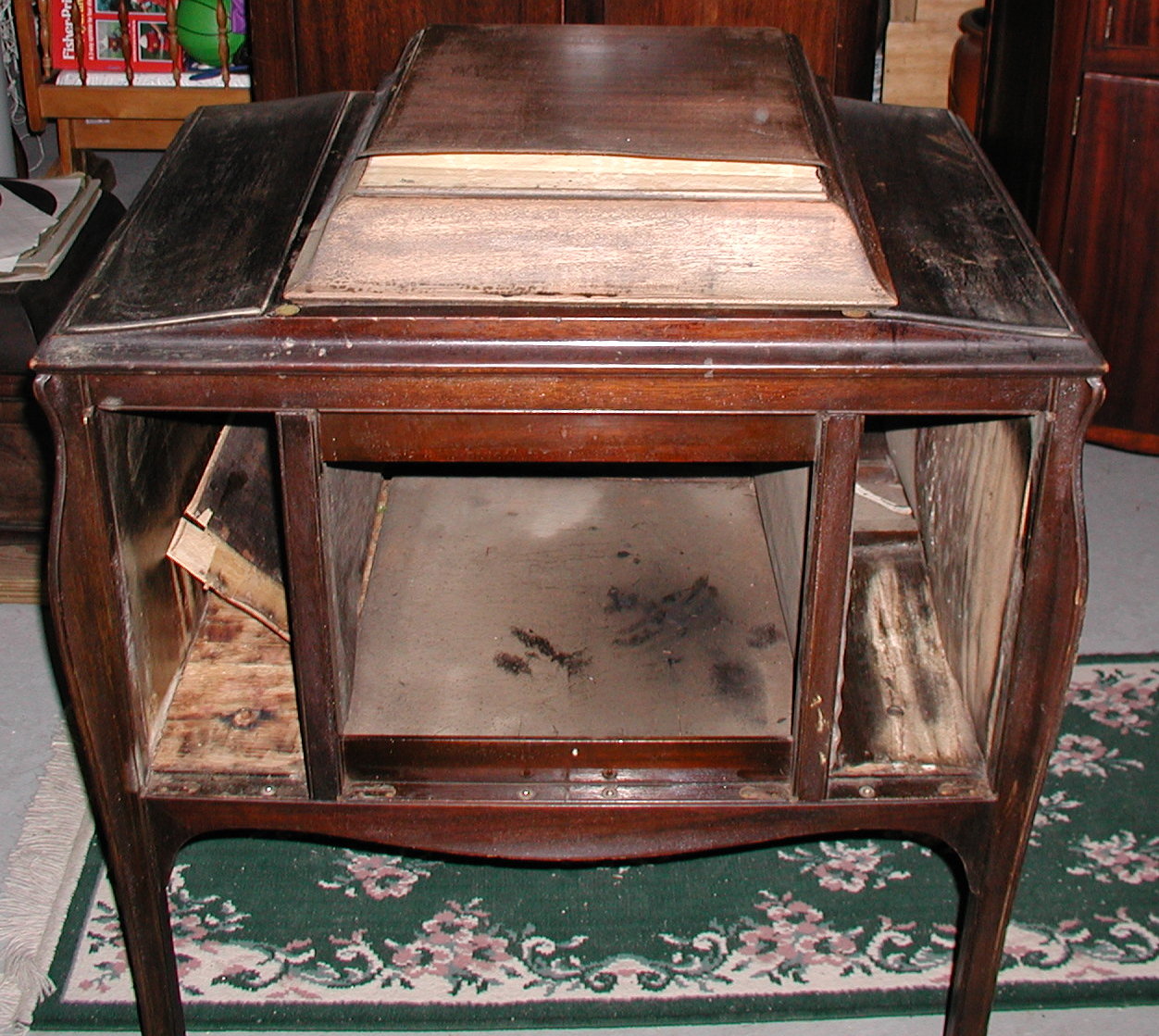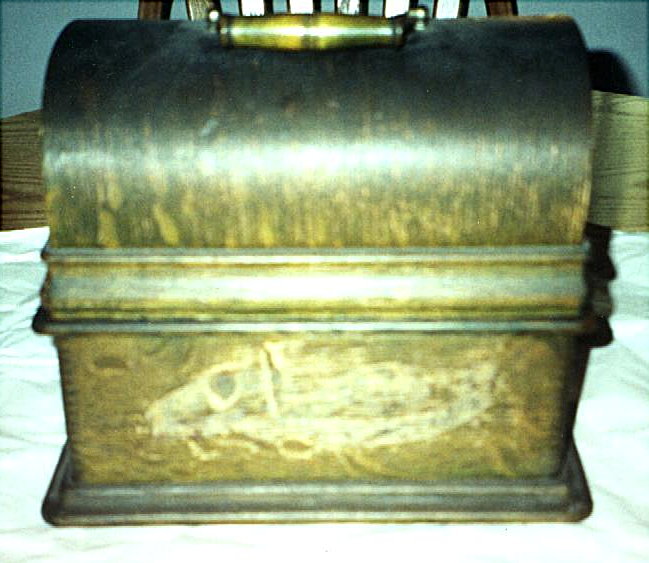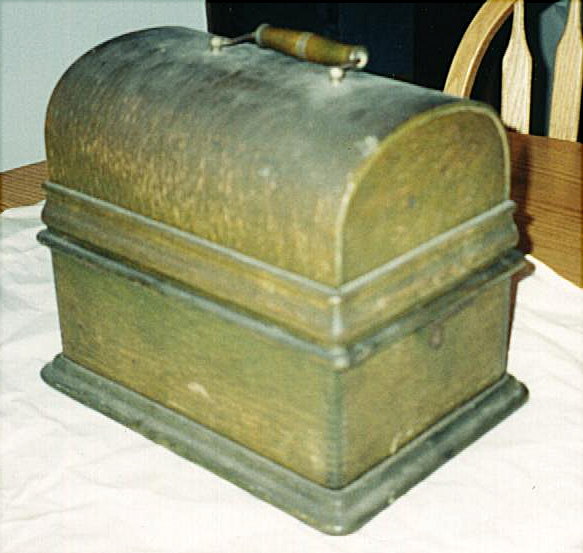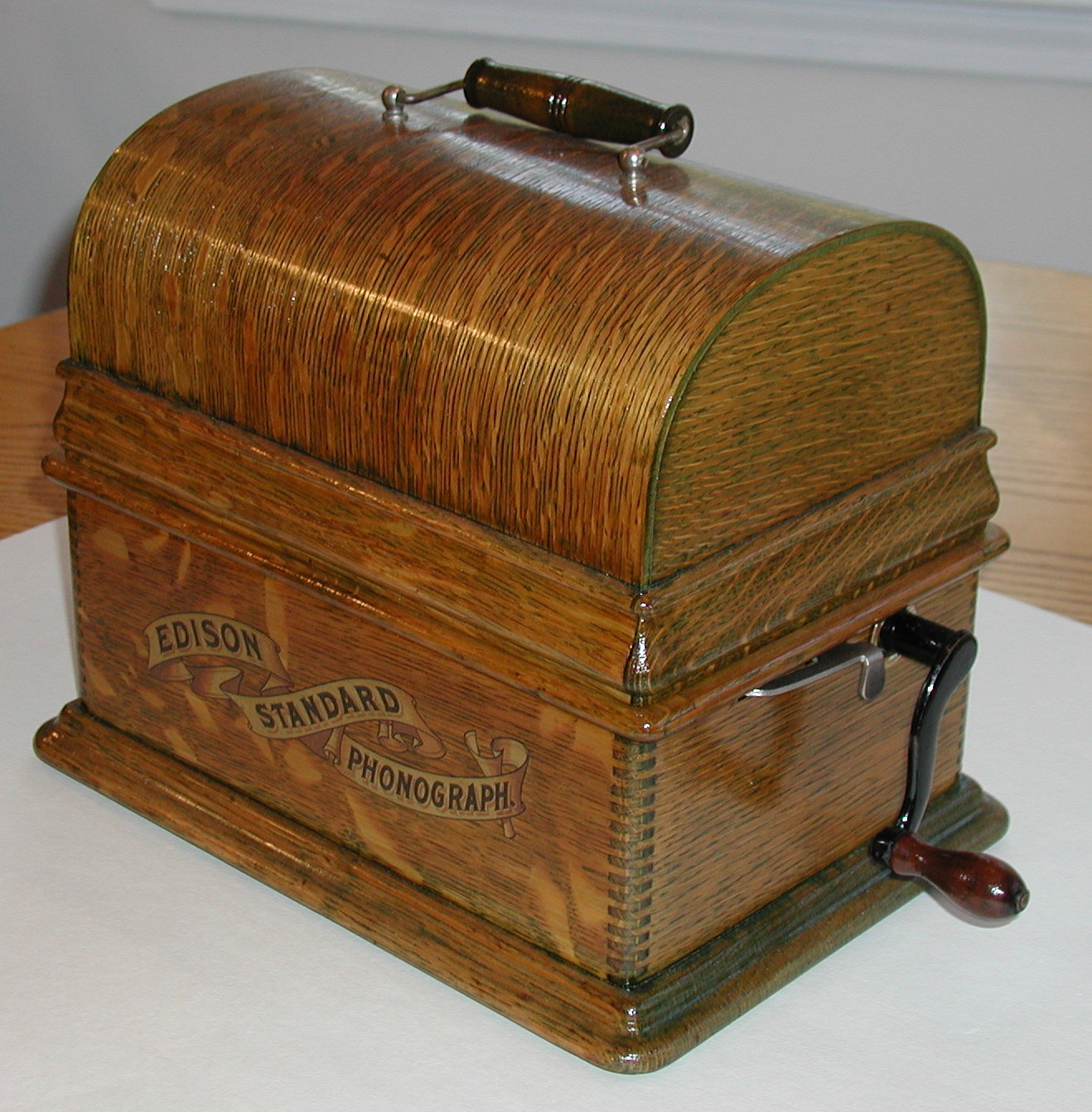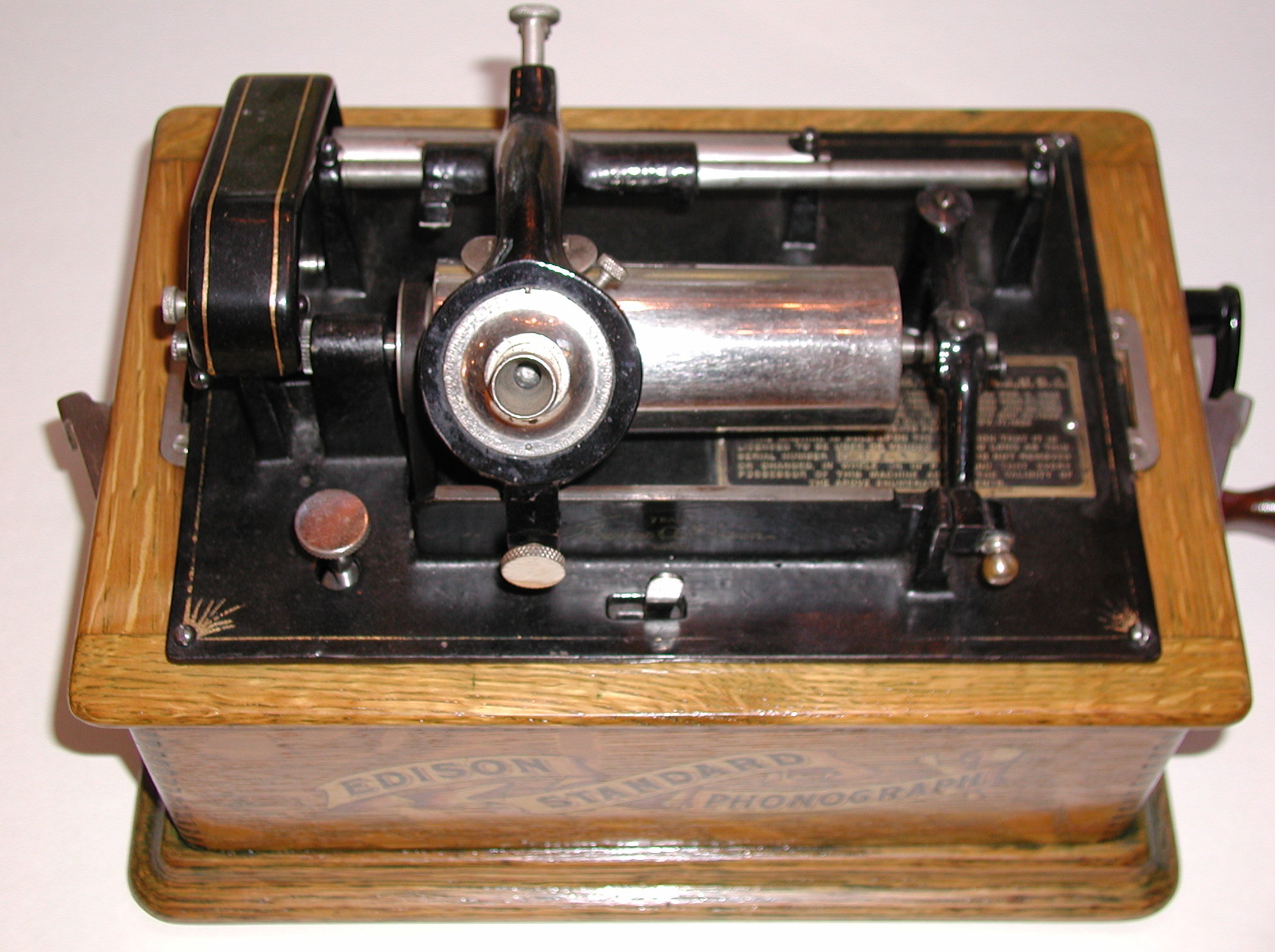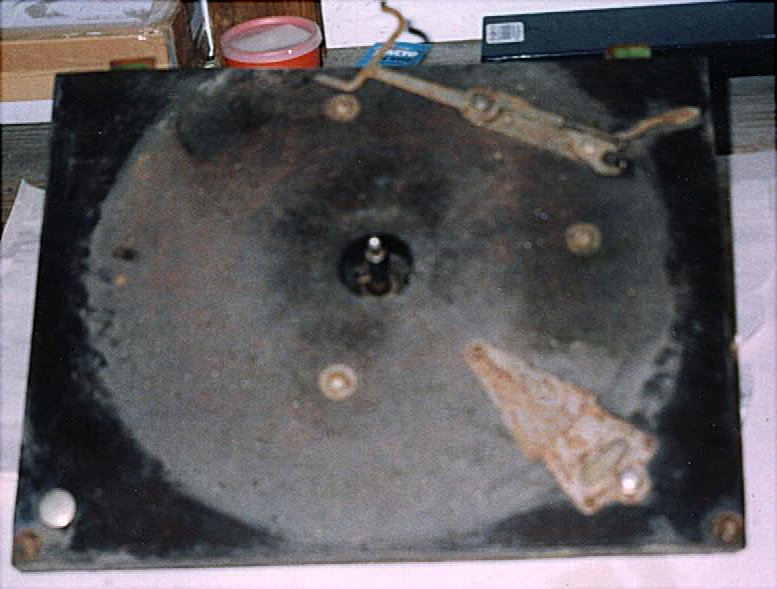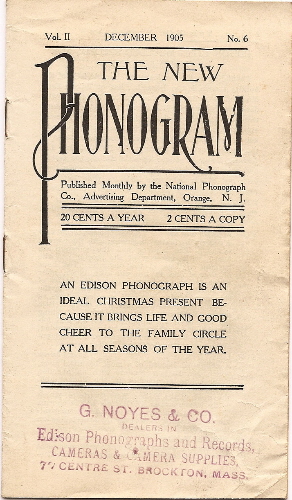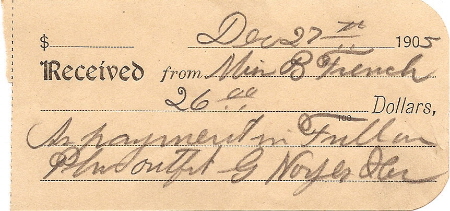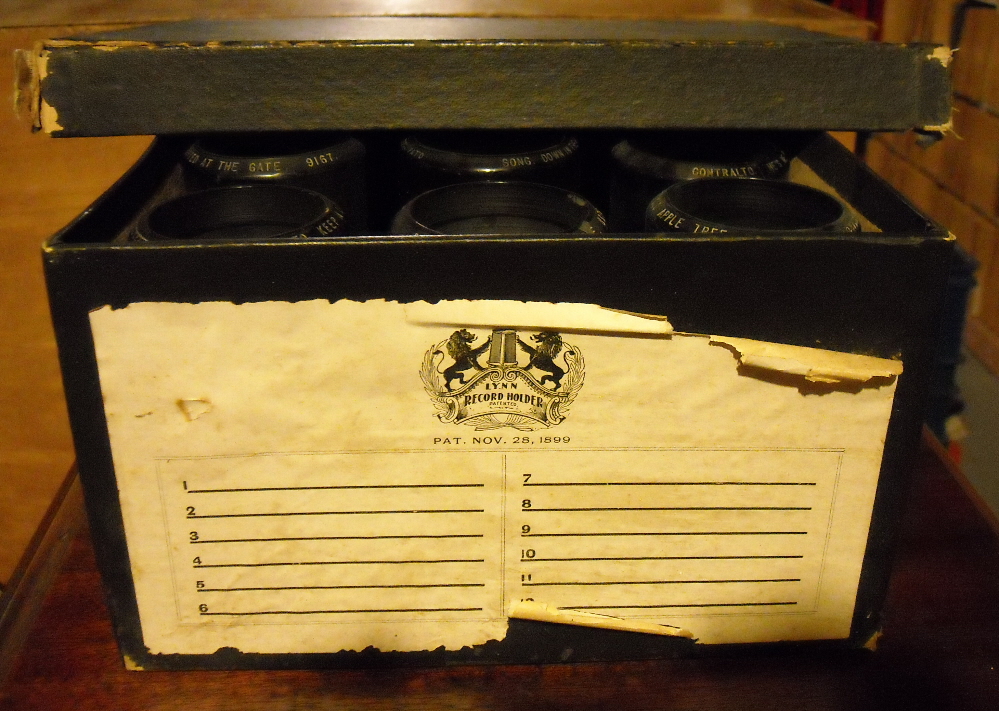My Phonograph Collection
My first phonograph was an Edison C-19. This came to me from a friend of the family (Bessie) who was cleaning out her basement. I didn't know anything about phonographs. It came with 50+ Edison records. When I got it home and it played I was hooked. Below are some of the phonographs in my collection.
Victrola 240 during restoration showing the insides of the record cabinets. Peeling, bubbled veneer with a lot of mildew. On the left side I had already removed the bottom piece of veneer. The final work used all the original veneer - cleaned, flattened, re-glued and several new coats of shellac. In this picture the lid has already been stripped of it's finish and placed on top.
After 3.5 months of slowly working through all the difficulties it has been brought back to life and is played on a regular basis.
Edison Standard Model A, before restoration
Click on record to see some of my other phonographs
Victrola 240 after restoration
Next is an Edison Standard Model B. Date on this one has a fairly narrow range since they didn't make the banner version of this machine for too long. It's anywhere from October 1905 through summer of 1906. This machine came from Louisiana and I purchased it on Ebay. It needed help and a horn. It was not working when I received it. My goal was to do minimal cabinet restoration (ie. no new shellac) and just get the motor working properly. However, I did have to use shellac on the front as the decal needed to be replaced and I had to use shellac to cover it. The flash from both the before and after pictures shows spots that really aren't there on the machine. However, in the before pictures there are a lot of paint spots as well.
My second phonograph was a Columbia Grafanola floor model which I found at a tag sale. It had a broken spring and a few other minor things wrong. After fixing that up I didn't necessarily want it because the cabinet wasn't in very good shape, and I did not yet have the desire to work on large scale cabinet work. I found a antique dealer who had a non-working Edison Standard Model A that he was willing to do an even trade for the Columbia. Good for him and good for me. He hadn't been able to sell the Edison and he quickly sold the Columbia. For me, I got my first cylinder machine for a bargain price. Now I just had to fix it up and find a horn.
Edison C-19 "Chippendale"
Edison C-19 "Chippendale"
After some time I found a replica decal and went to work on refinishing the Edison Standard and got the motor working. I did nothing to the bedplate except to clean it up. This was my first case restoration. I made some mistakes along the way. Note in the before pictures how this was a "green oak" stain. You'll see in the after pictures I chose not to do this although I did try to give it a greenish tint by mixing some green dye in with the shellac. However, I was a bit too conservative and you can barely tell it's been used. Approximate date for this machine is 1904 or 1905.
Edison Standard Model A, after restoration
Edison Standard Model A, before restoration
My most challenging project was a Victrola 240. This machine had been in a flood in a local antique store and had been completely under water. When I finally got to it months later the dealer had said that the side doors didn't open (thought they were faux doors). What I found out once I got it home and got the doors open was that there were four or five record albums filled with records in both compartments. They were still wet and the insides were filled with white mildew. Eck! At first I was only going to use this machine for parts. But I decided to use this as an experiment to learn about how to fix up a terrible machine and bring it back from the dead, if possible, and keep it as original as possible. On the positive side it was structurally sound so there was a glimmer of hope. Below are some of the pictures of what it looked like. Ufnforunately, the before pictures were also before digital camera so these aren't the best quality shots as they are scanned photos.
Victrola 240 before restoration
Edison Standard Model B before restoration
Edison Standard Model B before restoration
Edison Standard Model B after restoration
Edison Standard Model B after restoration
Edison Standard Model A, after restoration
Victrola 240 after restoration
Victrola 240 before restoration. Not only was there a lot of peeling veneer from water damage but the back had warped and popped off.
Below are two pictures of the Edison C-19. No major restoration was needed. The only thing besides basic clean up was the record dividers were humidity/water damaged in that the vinyl? over the paperboard had become unglued. So I pulled out the entire record storage unit and re-glued all these. The motor was serviced and everything was good to go. The grill cloth is a replacement. The C-19 was first introduced in April 1919 and lasted through August 1927. The C-19 was a continuation of the C-250 model.
Victrola 240 motor board before restoration
Victrola 240 lid before restoration. The veneer was peeling but something had been spilled all over this and the rest of the top of the machine requiring the top layer of finish to be stripped off as it couldn't simply be cleaned.
Victrola 240 before restoration
The Victrola 240 (or VV-240 as shown on the ID plate) was introduced in 1922. This one was made in 1923 based on the serial number.
Website Owner: Glenn Longwell
Please email if you have questions, corrections or comments on anything you see. Thanks.
Contact: info@majesticrecord.com
In October 2008 I was fortunate to come across a very special find. Another Edison Standard Model B with the banner decal. However, this one had an aftermarket 10 panel horn with crane. The horn is about 30 inches long and the bell is 22" across. What made this so special is the other stuff that came with it to tell of its provenance and it came from the great grandson of the original owner. With it came the original receipt, a cylinder box, "The New Phonograph," a monthly advertising publication from Edison (National Phonograph Co.) and a large supply of clean 2 minute cylinders. I haven't done any restoration of the case yet. As I do I'll put up better before and after pictures. The finish is very tired and dried out but the decal is in great original shape.
"The New Phonogram" from December 1905 which was likely given to the original owner when she bought the machine. The dealer is G. Noyes & Co. of 77 Centre St. Brockton, Mass.
Original receipt from Dec 27th 1905 for payment in full on phono outfit for $26.00 from Miss B French. Based on the price it would seem to be for the phonograph, horn, crane and a few cylinders. Perhaps even the box below.
With the Standard B came this cylinder box that holds 12 cylinders on numbered, paperboard pegs. The front reads "Lynn Record Holder." It also gives a patent date - "PAT NOV 28, 1899" Doing a patent search turns out this is patent number 637,933 Holder or Support for Graphophone-Cylinders. The inventor was Frederick B. Horton of Lynn, MA and was assigned to George W. Young of Lynn, MA.
